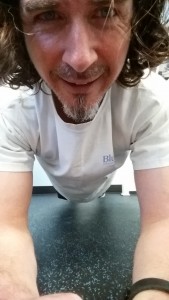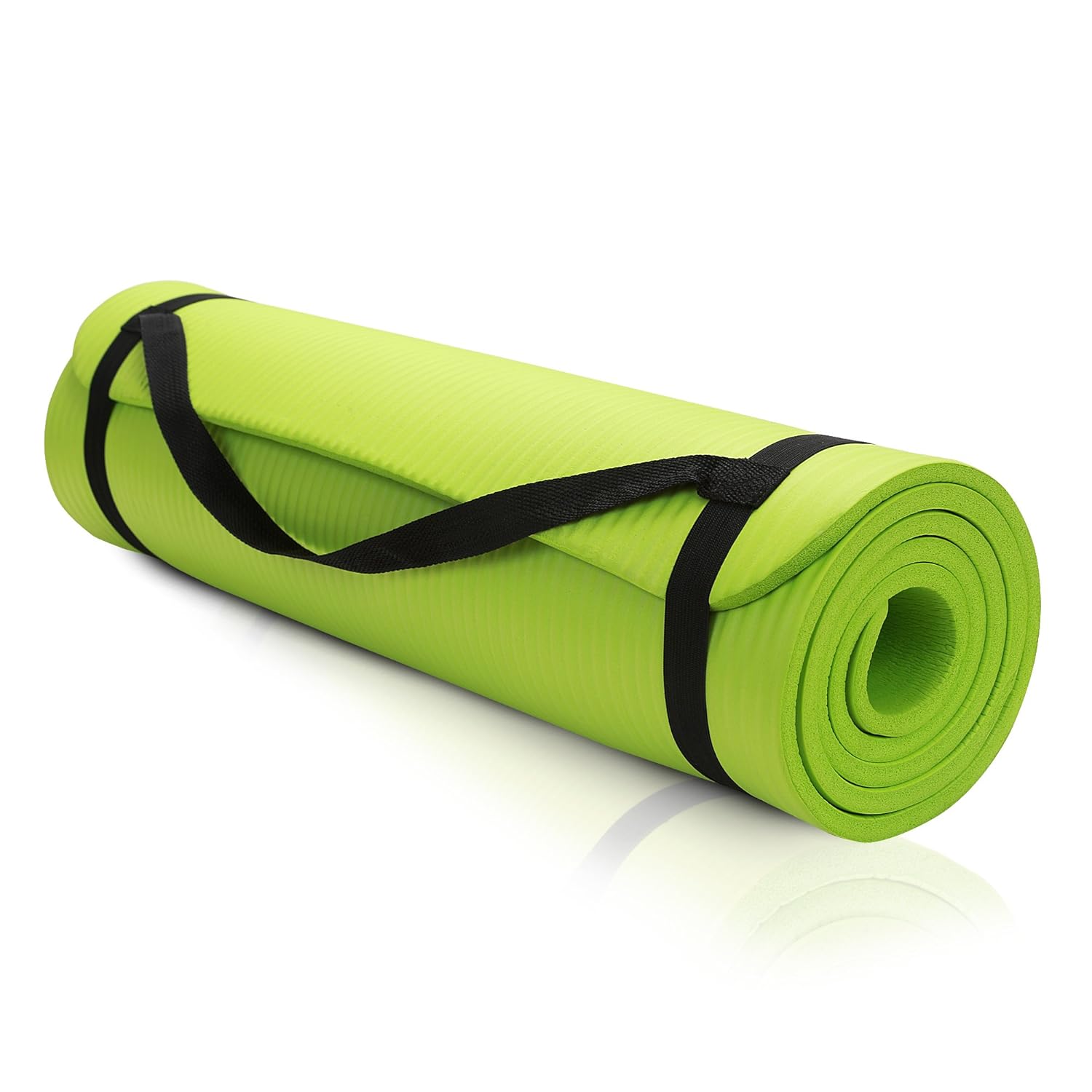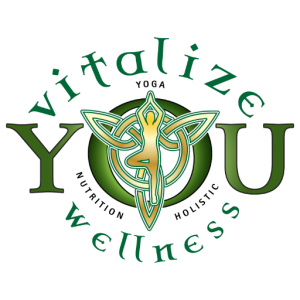How to Exercise while Avoiding the New Year’s Crush at the Gym
Ah, the beginning of the New Year brings LOTS of folks out to the gyms who make resolutions to exercise. Some just to get into a little better shape, some to lose weight, some to get ripped, and others are dragged there as companions. Within a month or two, the swell of people packing the gym will ebb and you’ll find you can again go at just about anytime and get on your favorite cardio machine, make your rounds on the strength training equipment, or find space in your favorite class.
While most of us don’t have our own personal gyms at home, there are still plenty of ways to keep exercising if you’re avoiding the New Year’s Gym Crush. You can still use body weight exercise to work your core, your chest, shoulders, and triceps, your glutes and legs, and get your cardio in…all without leaving your house. No, you don’t need a large area or high ceiling either.
Let’s start at the top and work our way down.
The simplest and easiest way to work your chest, shoulders, and triceps is the PUSH-UP. Yep. You only need slightly more floor space than it takes you to lie on the floor. Push-ups are as simple as putting your hands on the floor and pushing your body up until your arms are fully extended. To do a more proper push-up, start with your arms fully extended, lower your body until your elbows are bent and your upper arm is parallel with the floor, then push back up until your arms are fully extended. That’s one rep, or repetition. You should raise and lower your body as a unit, keeping it in a generally straight line. If you can’t do any, try doing them with your knees on the ground until you’ve worked up to doing them with your legs straight.

Planking selfie at the gym
Next we move to your core. What’s the difference in your core and your abs? The core includes your abs, obliques, and lower back. Your core is your trunk, your torso, and it is vital to have a strong core for a variety of reasons. An exercise that has become a big favorite for working the core over the last few years is the PLANK. Planking can be done in the extended push-up position with the arms locked out or resting your body weight on your elbows. This looks really easy, because in its simplest form, there’s no movement. The key is to hold your body in a straight line. There are many variations, including ones in which you lift your legs up behind you, side planking, planking on exercise balls, etc. I sometimes add movement into mine by rocking up and back on my toes or left and right.
Of course, you can do crunches, sit-ups, and leg lifts, as well, but those really only target your abs. Be careful when doing crunches and sit-ups to not put your hands behind your head and use them to jerk yourself up. You can hurt your neck.
Moving a little lower, we have the glutes…the big muscles in your booty. A simple exercise to work these, as well as a little on your core, is what I’ll call the HIP RAISE. Lie on your back and bend your knees, bringing your feet up flat on the floor near your butt. Put your arms out to the side for balance, then raise your hips off the floor until your body is in a generally straight line from your knees to your shoulder blades. Like planking, you can just hold this position or you can add variation, such as alternately straightening one leg at a time.
Another exercise that works the glutes while also working the quadriceps (front of the leg) and the hamstring (back of the leg), is the LUNGE. Start with your feet together, then take a bigger than normal step forward , bending the stepping leg until it reaches a ninety degree angle, then push back up, returning to a standing position. Do this again with the other leg and you’ve completed one rep. Repeat this until you’ve reached the number of reps you’ve set as your goal for that set. Be careful not to just flop forward. The bend should be deliberate. Focus on the movement, making sure your lead knee isn’t wobbling back and forth, and try not to bend that knee past ninety degrees.
While the calves get a tiny bit of work from the lunge, you can specifically target them with the CALF RAISE/TOE RAISE. Ideally, to get the full stretch and range of motion, you could do this on a step, but since not everyone has a step, we’ll do two different motions to work the front and back of calf muscles. Start in a standing position with feet shoulder width apart (or slightly closer, but not right next to each other). Stretch up onto your toes, then lower yourself back down until your heels are on the ground. Rock back on your heels, pulling your toes back up toward your knee, and return to standing flat-footed. That’s one rep. If you need help balancing while doing this exercise, you can hold onto the back of a chair or a kitchen counter.
 So, now we’re up to getting your cardio in. You can run in place or do jumping jacks/side straddle hops, but I prefer JUMPING ROPE…and you can even do it in a room with low ceilings and very little space. How is that possible, you ask? By using a cordless/ropeless Jump Rope. These electronic jump ropes allow you to simulate jumping rope without having to worry about space…and without having to worry about getting tangled up in your rope. Most of these will track, at the very least, the number of “jumps” or “skips”. I use one made by FAMI (pictured left). It tracks more than jump count and it comes with a “rope” that I could connect up if I wanted to go out side and actually jump over the rope.
So, now we’re up to getting your cardio in. You can run in place or do jumping jacks/side straddle hops, but I prefer JUMPING ROPE…and you can even do it in a room with low ceilings and very little space. How is that possible, you ask? By using a cordless/ropeless Jump Rope. These electronic jump ropes allow you to simulate jumping rope without having to worry about space…and without having to worry about getting tangled up in your rope. Most of these will track, at the very least, the number of “jumps” or “skips”. I use one made by FAMI (pictured left). It tracks more than jump count and it comes with a “rope” that I could connect up if I wanted to go out side and actually jump over the rope.
A huge benefit to not having to actually jump over a rope is that you’re free to do all sorts of different footwork that would be difficult to accomplish with an actual rope. I suggest jumping for 15 to 20 minutes, taking a quick break to do a set of push-ups and crunches, then repeat this three or four times depending on how much time you have. Because you don’t have to keep track of your own count, you can throw on a movie and watch it while jumping.
 Most of these exercises don’t require any extra equipment. Some of these may be more comfortable done on a yoga/athletic mat to throw down beneath you. Another suggested use for the mat is, whiled rolled up, to gently press down on your toes during the ‘toe raise’ portion of the calf raise exercise to provide a little resistance. There are plenty available as thin as 3/16″ to 1/4″ thick, but I’d recommend one at least 1/3″ thick to help pad your elbows when planking. The one pictured right by Athletic Intuition also comes with a carry strap and is available in many different colors.
Most of these exercises don’t require any extra equipment. Some of these may be more comfortable done on a yoga/athletic mat to throw down beneath you. Another suggested use for the mat is, whiled rolled up, to gently press down on your toes during the ‘toe raise’ portion of the calf raise exercise to provide a little resistance. There are plenty available as thin as 3/16″ to 1/4″ thick, but I’d recommend one at least 1/3″ thick to help pad your elbows when planking. The one pictured right by Athletic Intuition also comes with a carry strap and is available in many different colors.
